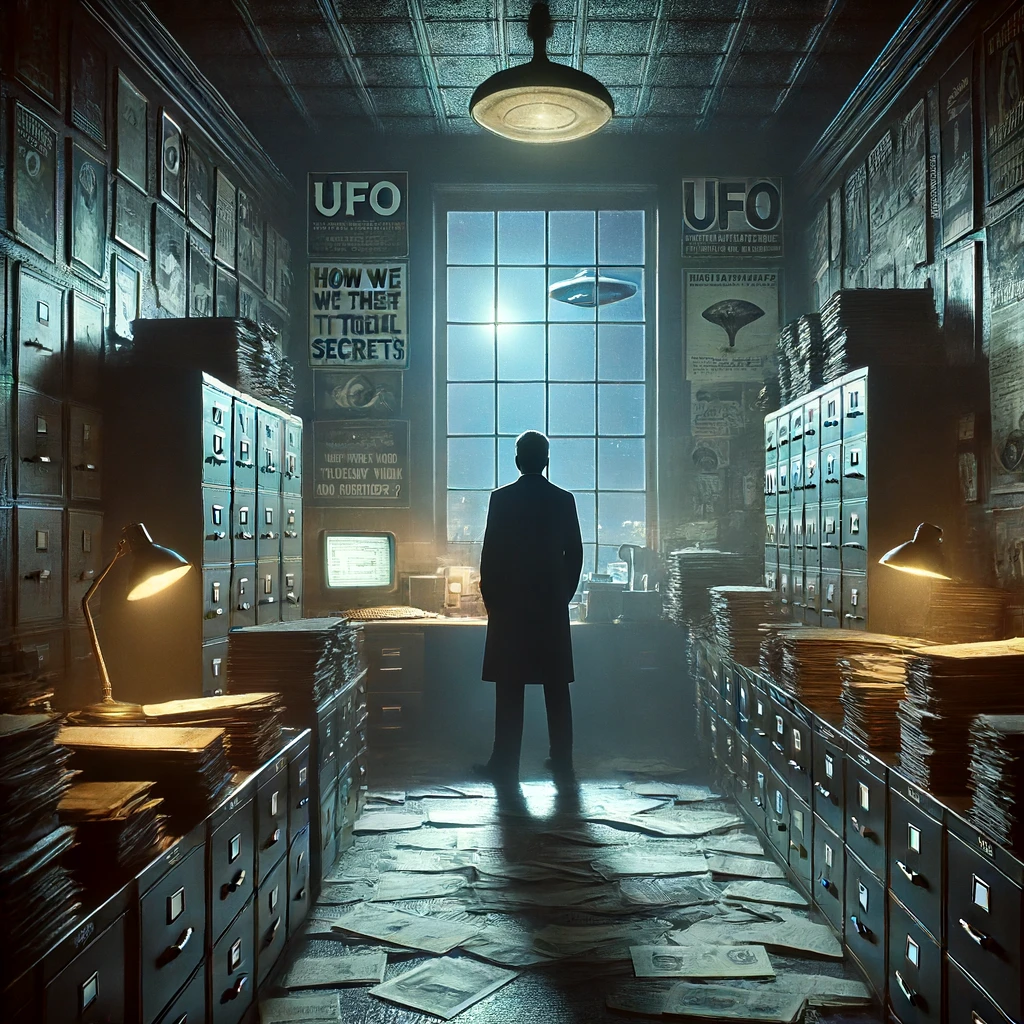How can we then Trust Them with our National Secrets?

Dr. Sean Kirkpatrick, the former head of the Pentagon’s UFO office known as the All-Domain Anomaly Resolution Office (AARO), recently made a startling claim about the infiltration of what he calls an “alien religion” into the US government. During his 18-month tenure, AARO, established by Congress to investigate UFO sightings, had access to top-secret information and searched extensively for evidence of aliens. Despite their exhaustive efforts, they found no signs of extraterrestrials. Instead, they uncovered a group of fervent UFO believers who had been propagating false and unfounded paranormal stories. This core group was instrumental in promoting an inaccurate New York Times story about UFOs, which was then widely disseminated by mainstream media, leading to a proliferation of baseless UFO narratives.
Kirkpatrick’s revelations to the New York Post’s Steven Greenstreet shed light on the persistence of these UFO true believers within the US military, whom he describes as holding quasi-religious convictions. These individuals, he warns, pose a potential national security threat because their decisions are driven by belief rather than evidence. Kirkpatrick claims that him and his family have even faced threats of violence from some of these believers who accuse him of concealing the truth about aliens. His primary concern is the influence these believers have on national security, as they are entrusted with sensitive information and responsibilities. Kirkpatrick’s questioning of how such individuals can be trusted with national secrets highlights a significant concern: those making critical security decisions might be guided by fervent convictions rather than empirical data, turning the very concept of trust upside down. Despite AARO’s comprehensive report debunking the existence of extraterrestrials, Congress and the media continue to chase the UFO narrative, often ignoring the evidence and perpetuating a cycle of misinformation. This upside-down scenario underscores the challenges of separating fact from fiction in the ongoing discourse about UFOs.
If UFOs and Beings are indeed real, then the true source of misinformation over the last 80 years likely stems from high-level government and military officials who have deliberately obscured the truth from the general public. These authorities, entrusted with national secrets, have maintained a façade of denial regarding the existence of UFOs and alien technology. This deliberate deception raises a profound question: “How can we then trust them with our national secrets?” If these officials have been lying to the public, not only about the existence of these phenomena but also about the groundbreaking technology derived from them, it implies a deep betrayal of public trust. This hidden technology, potentially capable of revolutionizing various sectors for the common good, has been kept exclusive, benefitting only a privileged few. Such actions not only undermine the integrity of these officials but also deprive society of advancements that could significantly enhance our quality of life. The perpetuation of this misinformation has thus fostered a culture of secrecy and mistrust, fundamentally challenging the notion of transparency and accountability in governance.
What UFO Disclosure Is Up Against looks into the challenges that impede the full disclosure of UFO-related information to the public. It highlights the entrenched bureaucratic resistance within government institutions, where classified projects and secrecy protocols make transparency nearly impossible. The piece discusses the conflicting interests between those advocating for disclosure and the entities benefiting from continued secrecy, including private contractors and intelligence agencies. Additionally, it explores how misinformation and media sensationalism further complicate efforts to present accurate information.
How the UFO Stigma Was Created explores the origins and development of the negative perception surrounding UFO sightings and reports. It examines how early government efforts, particularly by the U.S. Air Force, played a significant role in fostering skepticism and ridicule through programs like Project Blue Book, which aimed to debunk and dismiss UFO reports. Then there is the media’s role in perpetuating the stigma, often portraying UFO enthusiasts as conspiracy theorists or fringe elements.
Panic and Social Upheaval When UFOs Confirmed explains the motivations behind the actions of debunkers, the military, and other authorities in dismissing or downplaying UFO sightings. It argues that the primary concern driving these efforts is the fear of widespread panic and social upheaval if the existence of UFOs were confirmed. The potential for mass hysteria and the disruption of societal norms are seen as significant risks, prompting authorities to maintain control through skepticism and discrediting of UFO reports.
This manipulative approach to shaping public perception and maintaining control underscores the disturbing imbalance between transparency and deceit in the context of unidentified phenomena.


